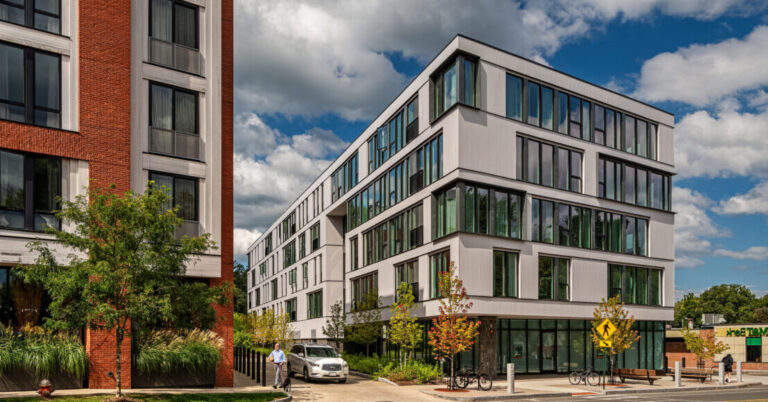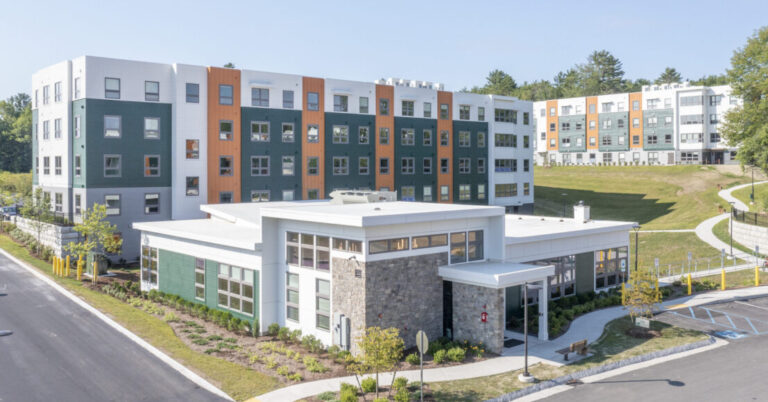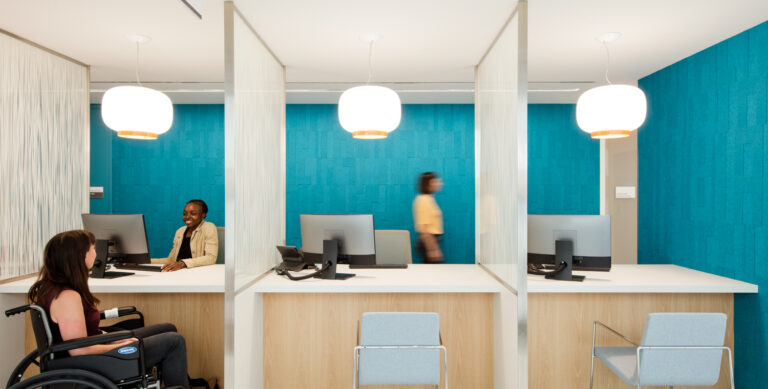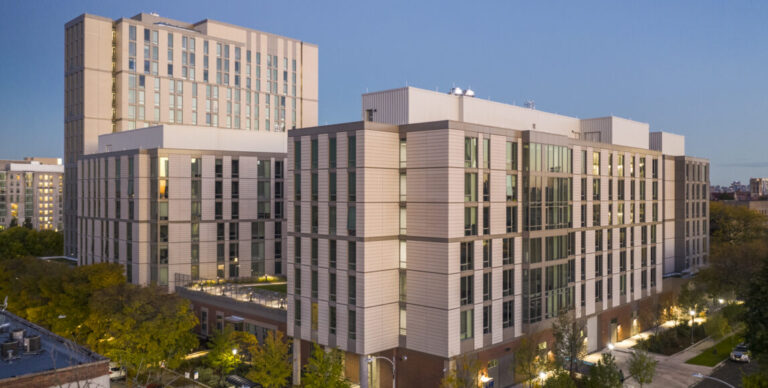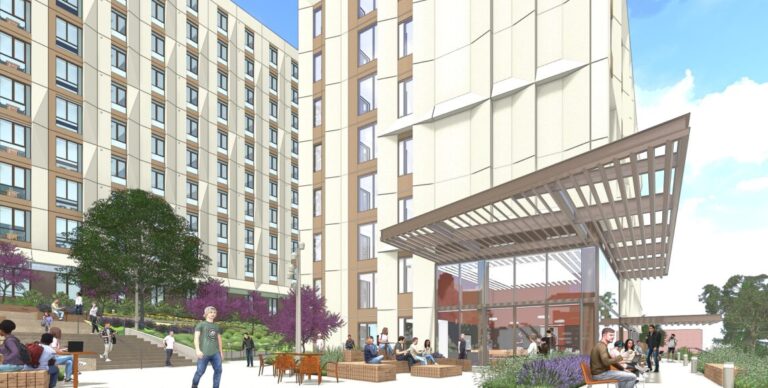In grappling with seismic safety standards, California hospitals must think about their long-term growth

A looming state deadline may be an opportunity to advance big-picture plans
Time is running out for California hospitals to meet seismic safety standards.
In September, Gov. Gavin Newsom vetoed an extension for completing this work, which affects more than 60% of the state’s 400 hospital complexes. Owners now have just over 5 years to demolish, replace or retrofit acute care inpatient buildings—or convert them to non-acute use—so they are in substantial compliance with state seismic safety standards. Failure to meet the January 1, 2030, deadline will result in immediate closure of the facility.
The pushback from hospital owners has been swift, with many saying that if the money existed to bring buildings into compliance, the work would already be underway. California’s hospitals are struggling, with 1 in 5 at risk of closing due to unsustainable financial positions marked by growing operating losses, declining cash balances and debt loads, according to a 2023 report commissioned by the California Hospital Association (CHA).
The cost of implementing seismic upgrades is also substantial. CHA estimates the total cost statewide to be $167 billion, a noticeable jump from the 2019 estimate of $143 billion, due in part to inflation and rising material and labor costs. The sudden spike in the volume of seismic work within a relatively short timeframe is also likely to create a shortage of skilled tradespeople and materials for all hospital-related development work and bottleneck regulatory review. The result is an even higher price tag and extended schedules for the period leading up to and even past the deadline.
In balancing the need to keep patients, providers and hospital staff safe from seismic activity with the reality that a growing number of hospitals simply can’t make the building upgrades required to do so, the state has left only a small window for compromise. Refusing to grant a blanket extension, Gov. Newsom instead expressed his desire for “an extended deadline … limited in scope, granted only on a case-by-case basis to hospitals with demonstrated need and a clear path to compliance, and in combination with strong accountability and enforcement mechanisms.”
“The veto of the deadline extension is certainly not the outcome that many in the state expected, but there does appear to be an opportunity for hospital owners to upgrade their facilities and implement long-term, strategic growth plans that can shore up their financial positions,” PMA senior project manager and structural engineer David Williams said. “Hospitals must take a more thoughtful and holistic approach to seismic safety that improves the long-term viability of their facilities, patient outcomes, and their bottom line. Close coordination with the Office of Statewide Hospital Planning and Development (OSHPD) will be required to find a path forward that meets the unique needs of each facility.
Assessing hospital growth, revenues and retrofit expenses
As most hospital owners know, simply retrofitting an old, outdated acute care building within a healthcare campus provides few value-added benefits. A healthcare campus can be made up of dozens of buildings, with only one or two of the older buildings failing to meet seismic safety standards. A hospital could invest millions to reinforce these structures—adding walls, braces, or frames to make it more earthquake-resistant—but this will likely only result in less usable square footage. Additionally, nonstructural upgrades can be expensive, invasive, and now require improvements like water supply, power, and sewer service to support up to 72 hours of operations.
These additions are costly, can take patient beds offline for years, and can be a distraction to the day-to-day operations of the healthcare environment. In other parts of the country, hospital systems are undertaking acute care projects that ultimately offer a better patient experience, converting semi-private rooms to private rooms, shoring up infrastructure to support new equipment and technology, and creating larger operating rooms and emergency exam spaces to comply with Facility Guidelines Institute’s (FGI) regulatory codes.
While upgrading older buildings often doesn’t make fiscal sense, tearing down or replacing existing structures also isn’t a straightforward swap. Given the way many healthcare systems expand, with new buildings being added to the periphery of the campus, tearing down or replacing older structures can be complicated, expensive, or simply unfeasible.
That leaves converting acute-care buildings to non-acute care uses, bucking a national trend of non-acute services moving out of the hospital environment and into retail and other non-traditional settings. Since these services could be suspended in the event of an earthquake, their buildings don’t need to meet the “fully functional” requirements of acute care settings.
Gaining a competitive edge for non-acute care
At a recent Association of Medical Facility Professionals (AMFP) summit in Chicago, attendees identified a number of national trends that could help bolster the case for converting hospital space to non-acute use. Ambulatory care and outpatient settings are expected to grow for non-acute care patients, and while the center of a hospital campus might not be a natural spot for these services, offering them within the context of other medical services can help hospitals expand.
Competition for non-acute patients is fierce as more non-traditional healthcare providers, like retail and technology companies, enter the market. Investing in upgrades to existing facilities without having to account for seismic safety could reposition hospitals as a place for preventative—not just emergency—care. Behavioral health, imaging centers, and physical therapy are just a few non-acute services that hospitals can consider that won’t have to meet more stringent acute care seismic requirements.
By refocusing older buildings to non-acute care, hospitals can free up capital improvement funds to expand core services in new buildings, doubling down on services with the ability to drive healthcare system growth: emergency departments, intensive care units, labor and delivery, and medical surgery that can’t be performed in an outpatient environment.
Finding the path forward
It’s clear that to make seismic mandates work on any timeline, hospitals must consider holistic planning and use any shift in building purpose to gain a competitive edge with healthcare consumers.
While the state has been slow to provide supportive options to hospital owners by way of alternative financing, regional requirements, or streamlining approvals, the reality is that we can’t afford to have hospital systems close due to unfunded building mandates. Some small and rural hospitals that bear an unfair share of the cost for these requirements have been able to procure grants to meet the safety standards, but a $50 million expansion in these programs in 2024 does not come near the billions it will take to make these mandates work statewide.
We believe there is still time for negotiation with the state, especially for those hospitals that are armed with a strategic plan to drive growth and add revenue streams over the coming years and decades. By making aggressive long-term plans that go beyond California’s requirements, these hospitals can unlock greater value and perhaps persuade the state to extend their deadline as part of a more comprehensive approach to hospital safety. The task now is to get started—and quickly—as the original deadline looms.
David Williams is a senior project manager and structural engineer working in PMA’s Los Angeles office.
P3 or University-Built: Choosing the Right Path for Student Housing Development
Universities addressing student housing shortages must choose between building facilities themselves for long-term control and revenue, or partnering through P3s for faster delivery and shared risk, with each approach offering distinct trade-offs in financing, operations, and student experience
